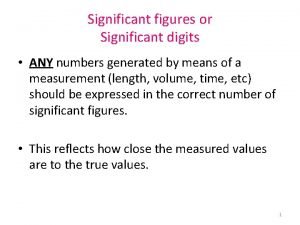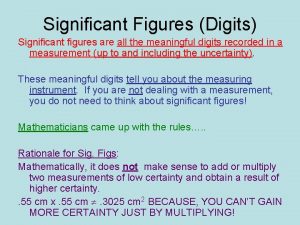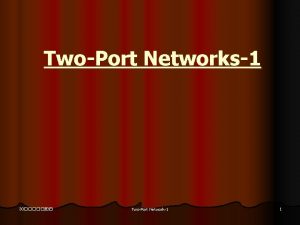Chapter 17 TwoPort Networks Fig 17 1 a








- Slides: 8

Chapter 17 Two-Port Networks Fig. 17. 1 (a) A one-port network. Fig. 17. 5 A general two-port with terminal voltages and currents… User Note: Fig. 17. 6 Circuit for Example 17. 4. Run View Show under the Slide Show menu to enable slide selection. Fig. 17. 9 (a, b) Two-ports which are equivalent to any general … Fig. 17. 10 The three-terminal D network (a) and the three-terminal… Fig. 17. 11 Circuit for Example 17. 6. Table 17. 1 Transformations between y, z, h, and t parameters. Engineering Circuit Analysis Sixth Edition W. H. Hayt, Jr. , J. E. Kemmerly, S. M. Durbin Copyright © 2002 Mc. Graw-Hill, Inc. All Rights Reserved.

(a) A one-port network. (b) A two-port network. W. H. Hayt, Jr. , J. E. Kemmerly, S. M. Durbin, Engineering Circuit Analysis, Sixth Edition. Copyright © 2002 Mc. Graw-Hill. All rights reserved.

A general two-port with terminal voltages and currents specified. The two-port is composed of linear elements, possibly including dependent sources, but not containing any independent sources. W. H. Hayt, Jr. , J. E. Kemmerly, S. M. Durbin, Engineering Circuit Analysis, Sixth Edition. Copyright © 2002 Mc. Graw-Hill. All rights reserved.

Find the four short-circuit admittance parameters for the resistive two-port shown below in (a). W. H. Hayt, Jr. , J. E. Kemmerly, S. M. Durbin, Engineering Circuit Analysis, Sixth Edition. Copyright © 2002 Mc. Graw-Hill. All rights reserved.

(a, b) Two-ports which are equivalent to any general linear two-port. The dependent source in part a depends on V 1, and that in part b depends on V 2. (c) An equivalent for a bilateral network. W. H. Hayt, Jr. , J. E. Kemmerly, S. M. Durbin, Engineering Circuit Analysis, Sixth Edition. Copyright © 2002 Mc. Graw-Hill. All rights reserved.

The three-terminal D network (a) and the three-terminal Y network (b) are equivalent if the six impedances satisfy the conditions of the Y-D transformation. W. H. Hayt, Jr. , J. E. Kemmerly, S. M. Durbin, Engineering Circuit Analysis, Sixth Edition. Copyright © 2002 Mc. Graw-Hill. All rights reserved.

Find the input resistance of the circuit shown in (a). W. H. Hayt, Jr. , J. E. Kemmerly, S. M. Durbin, Engineering Circuit Analysis, Sixth Edition. Copyright © 2002 Mc. Graw-Hill. All rights reserved.

W. H. Hayt, Jr. , J. E. Kemmerly, S. M. Durbin, Engineering Circuit Analysis, Sixth Edition. Copyright © 2002 Mc. Graw-Hill. All rights reserved.















